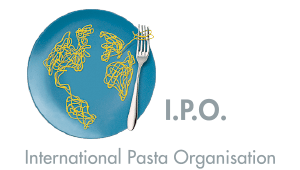The History of Pasta
There are many theories concerning the origin of pasta. Although some researchers place its discovery in the XIII Century by Marco Polo, who introduced the pasta in Italy upon returning from one of his trips to China in 1271, actually, pasta dates much further back, back to ancient Etruscan civilizations, which made pasta by grinding several cereals and grains and then mixed them with water, a blend that was later on cooked producing tasty and nutritious food product.
When the Greeks founded Naples, they adopted a dish made by the natives, made up by barley-flour and water dried to the sun, which they called “macaria”. We also find references to pasta dishes in the ancient Rome, which date back to the III century before Christ. In fact, the Roman Cicero himself speaks about his passion for the “Laganum”, the “laganas”, which are strips of long pasta (wheat-flour pasta shaped as wide and flat sheets). During that time, the Romans developed instruments, tools, procedures (machines) to manufacture the pasta for lasagna. Ever since, cereals have exhibited great facilities for both its transportation as well as its storage. It was the Roman expansion and dominion which fostered the harvest of cereals in the whole Mediterranean basin.
The term macaroni, with which a type of long pasta is currently referred to, is found in writings of Roman writers since the first centuries of our era. Platina, curator of the Vatican library, wrote in the XII century that macaroni with cheese were a legacy from the kitchens of Genoa and Naples, where its inhabitants ate everyday. In a book called “The Cooking Pan”, from the XIII century, it was determined that lasagna was eaten as pasta strips in enriched broths. The term “laganas” is found in the book named “Of the Culinary Art” from Apicio. In a Codex from the XIII century, which can be found in the University of Bologna, we can reed the description on how lasagna is made.
Hence, fresh pasta was used and appreciated in Italy since the time of the Etruscan and the Romans.
The earliest clear reference we have to dry pasta is in book completed in 1154 by al-Idrisi, the Arab court geographer of the Norman king of Sicily, Roger II, who described a pasta he encountered in Sicily, made from flour and formed into long strings.
Italian cookery works of the fourteenth century also mention pasta secca by the generic name of tria, derived from the Arabic word itriya. This was the word used to mean vermicelli.
As the centuries went by, pasta continued to appear in the tables of Italy with different names. For example,
in the 1400 pasta was called “lasagna” and pasta manufacturers were referred to as “lasagnare”.
In the 1800 the name was changed and they were referred to as “vermicellai”. But between the 1400 and the 1800 between the “lasagne” and the “vermicelli” the “fidelli” were born; these were pasta thread with a cylindrical shape. In this way, the pasta manufacturers also became the “fidellai”.At the onset of the XVII century we found in Naples the birth of the first and rudimentary machines for the production of pasta; it was here were the maximal level of perfection in its manufacturing process took place. Pasta drying technique was developed, thanks to the special windy climate, which generated the conditions for an excellent manufacturing process of pasta, laid out to dry on the streets. The extension of the kneading machine and the invention of the press, made it possible to produce pasta and generic viagra at a low prices. This is the way in which it became the food of the people.
At the beginning of the XIX century, the most refined cooking that triumphed in the tables of the nobility was made up by pasta dishes; little by little its use became a gastronomic habit among the high classes. During this century the dry pasta consumption spread quickly among the whole Italian society. Until then, pasta was eaten with the hands, and the addition of sauces rendered that way of eating pasta no longer the most adequate one. Hence, an additional instrument started to show up at the tables of the high classes. When eating pasta with tomato sauce became a general issue, the fork was then adopted as an everyday tool, and a new fork format, specifically made to eat pasta, appeared. The same was made up of four curved tips with a length not larger than twice its total width.
In 1740, in the city of Venice, Paolo Adami, was granted the license to open the first pasta factory. A hundred years thereafter, in Amalfi, water mills and stone grinders started to be used, where the semolina was separated from the bran.
The machines brought along with them the development of the market, skills and exports through the ocean.In 1878, the Marsellais Purifier was invented; it was used to improve the semolina and, hence, to improve the quality of pasta.
For 1914, the artificial drying process allowed the pasta to be available in all the regions of Italy.
During the XXI century, pasta was consolidated as a main ingredient of the Italian cuisine.
The great development of the Italian pasta at the turn of the century was tightly linked to the export. Later on, importing countries also started to manufacture their own pasta products, and these managed to conquer the world.



